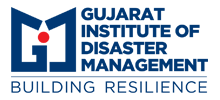Gujarat, strategically located in western India, presents a complex risk profile due to its diverse industrial terrain, geographical characteristics, and demographic diversity. The state grapples with a spectrum of natural and human-induced hazards, directly impacting its robust industrial sector.
The Kachchh region, classified as Zone V, faces seismic risks, with Zone IV areas also susceptible. Coastal vulnerabilities include cyclones, flooding, and storm surges, heightened by the state's extensive coastline. Tsunami risks from submarine earthquakes in the Arabian Sea add to the challenges. Water scarcity due to chronic droughts and uneven rainfall affects both agriculture and industry, alongside flood risks in certain regions.
Additionally, Gujarat confronts human-induced hazards, including fires, industrial and chemical accidents, epidemics, and stampedes. These incidents not only pose immediate threats but also require comprehensive industrial safety protocols.
Given these challenges, it becomes evident that while Gujarat's industrial sector serves as a driver of economic growth, it also faces susceptibility to accidents and disasters that can significantly impact both the economy and community well-being.
Why Build the Capacity ?
The rapid industrialization in Gujarat, particularly in the chemical sector, has brought many benefits to the state, including economic growth and employment generation. However, it has also led to an increased risk of hazardous chemical incidents. This risk is further exacerbated by the fact that Gujarat is vulnerable to certain specific natural hazards.
In the past, incidents within the state like the 2020 explosion at Yashashvi Rasayan Pvt. Ltd. in Dahej and the 2022 blaze at Anupam Rasayan India Limited factory in Sachin GIDC, Surat, as well as the tragic Bhopal Gas Tragedy at national level, have vividly demonstrated the devastating consequences of such disasters on the environment, public health, economy and the social fabric of communities. To mitigate these consequences, rigorous safety measures, capacity building, and effective disaster risk management are vitally important.
In this context, GIDM is organizing capacity-building programs on various aspects of Chemical Industrial Disaster Risk Management (CIDRM) to mitigate risks and enable effective responses to chemical emergencies.
Program Coverage
The program covers a wide range of topics relevant to chemical industrial disaster risk management (CIDRM). Aimed at fostering a disaster-resilient industrial sector, these capacity development programs focus on cultivating a culture of learning and capacity building in industrial safety and loss prevention. Employing needs-based and demand-driven approaches, the programs enhance stakeholder capacity.
Through a mix of theoretical sessions, practical exercises, case studies, and simulations, participants acquire comprehensive knowledge and practical skills to effectively address the complexities of CIDRM. Ultimately, these initiatives aims enhance the overall safety performance of industries.
Key Programmes
- Safety and Risk Management in MAH Installations
- Safeguarding and Effective Management of Hazardous Chemicals in Industries
- Medical Preparedness and Response in Chemical Emergencies
- Workplace & Process Safety in Chemical Industrial Installations
- Safe Transportation of Dangerous Goods
- Working at Heights Safety
- Confined Space Safety & Rescue
Topics Covered
- Legal and regulatory frameworks governing chemical installations
- Hazard Identification and Risk Assessment
- Workplace Safety
- Control of the causes of major industrial accidents
- Safe Handling and Storage of Hazardous Chemicals
- Process Safety Management
- Chemical Exposures and Toxicology
- Safety Audit as per IS 14489:2018
- Occupational Health & Safety
- Medical First Response during Chemical emergencies
- Transportation of dangerous goods
- Fire Prevention and Protection
- Tools for Hazardous Chemical Management
- Chemical Disaster Management plan & Emergency response
- Scenario-based mock drill and decision making exercises
Kindly access brochure for more information. Click here.



